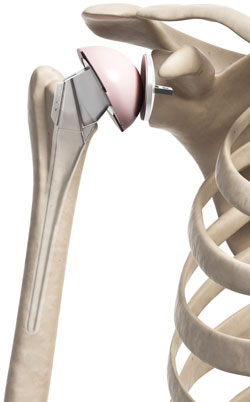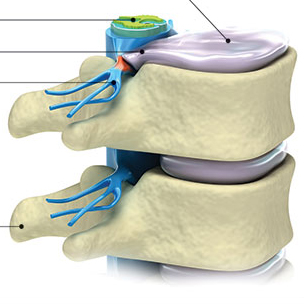Total Shoulder Replacement Surgery
 Arthritis or injury can also damage the shoulder joint preventing a person from lifting their arm. In severe cases, the only treatment available is shoulder joint replacement surgery. Shoulder replacement surgery has been around since the 1950s and was originally used for severe fractures, but because of its success, it has since been broadened to address arthritis. Today, about 23,000 people in the U.S. have shoulder replacement surgery. Patients with bone-on-bone contact are typically good candidates for shoulder replacement surgery, where an artificial ball and socket joint is installed into the shoulder.
Arthritis or injury can also damage the shoulder joint preventing a person from lifting their arm. In severe cases, the only treatment available is shoulder joint replacement surgery. Shoulder replacement surgery has been around since the 1950s and was originally used for severe fractures, but because of its success, it has since been broadened to address arthritis. Today, about 23,000 people in the U.S. have shoulder replacement surgery. Patients with bone-on-bone contact are typically good candidates for shoulder replacement surgery, where an artificial ball and socket joint is installed into the shoulder.
Shoulder replacement surgery creates new joint surfaces by replacing the ends of bones in a damaged joint. The top end of your upper arm bone (humerus) is rounded at the top and shaped like a ball. Muscles and ligaments hold this ball against a cup-shaped part of the shoulder bone.
Shoulder replacement surgery involves the highly trained surgeon replacing the ends of the damaged upper arm bone (humerus) and usually the shoulder bone (scapula) or capping them with artificial surfaces lined with plastic or metal and plastic. The surgeon will replace the top of the upper arm bone with a long metal piece, inserted into your upper arm bone, that has a rounded head. If the cup-shaped surface of your shoulder bone that cradles your upper arm bone is also damaged, doctors smooth it and then cap it with a plastic or metal and plastic piece. Sometimes specialized cement is used to hold joint components into place, and other times a specialized material is used that allows new bone to grow into the joint component over time.








